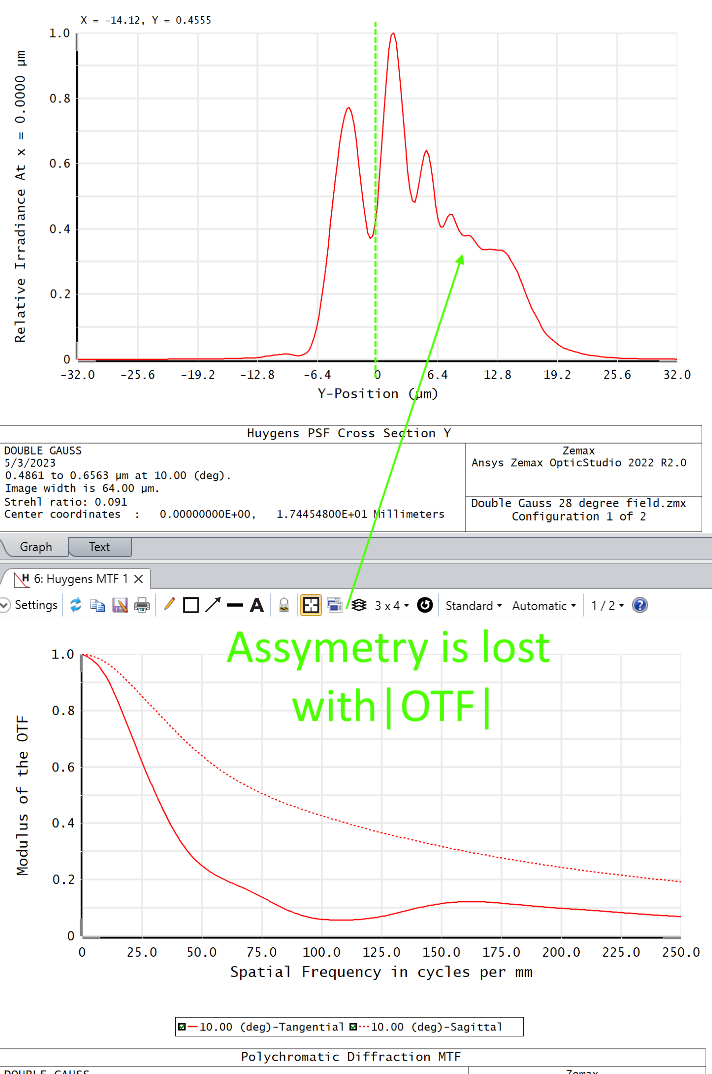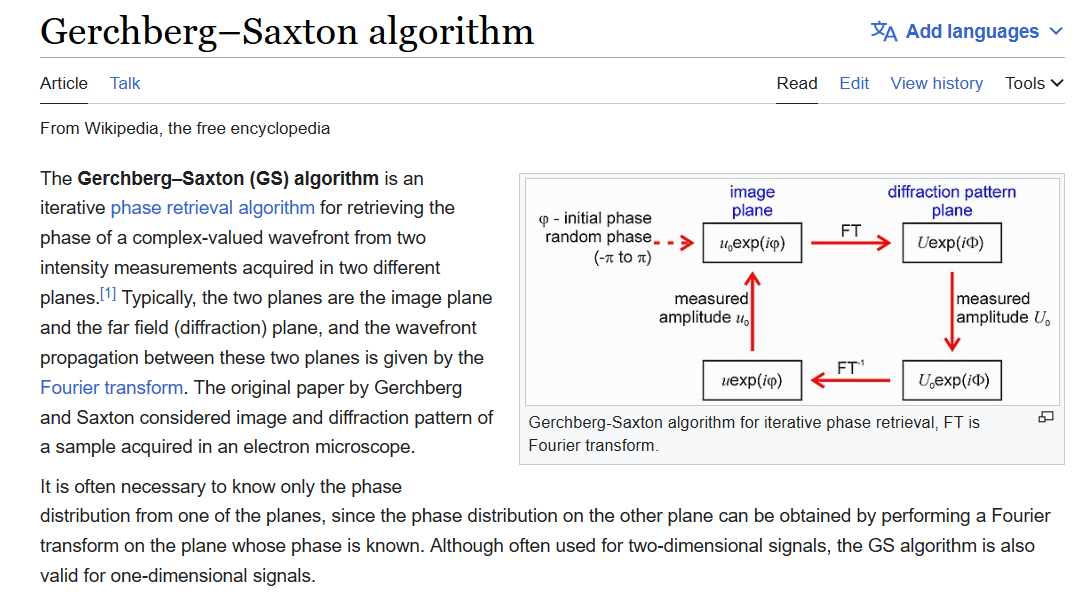Hi Community,
Someone recently asked how “easy” it would be to recreate a PSF from a given setup of MTF measurements. My first answer was “don’t do that” but I’m trying to quantify all the issues that are present with trying to recreate the PSF. Below are the major hurdles I see but I would love to get other people’s feedback into the feasibility/pitfalls that need to be considered:
- A single scan MTF is essentially a FFT of a 1D cross-section of the PSF. If there is no rotation in the system, then the MTF is the FFT of the Y axis (tangential) and X axis (sagittal); there is no information about any data points that lay off the x/y local axis. To fully recreate the PSF, you would need to have multiple MTF scans at different angles.
- The MTF is actually the absolute value of the OTF, so the MTF only has real values in it. The FFT/IFFT for any real-valued signal is always symmetric, so an asymmetric PSF cross-section can not be reproduced from the IFFT of the MTF, at least not without (a lot) of pre-processing. Q: is there a way to recover the OTF (imaginary part) from the MTF?

- The MTF is always normalized to a value of 1.0, so there is no information about the Strehl Ratio/PSF peak. So even if the shape of the PSF can be recovered, if there are MTF scans for different field angles, you would not be able to scale the PSFs to the correct intensities.
Are there other pitfalls/limitations when trying to go from MTF to PSF? Are there any good papers that go into depth about this?









